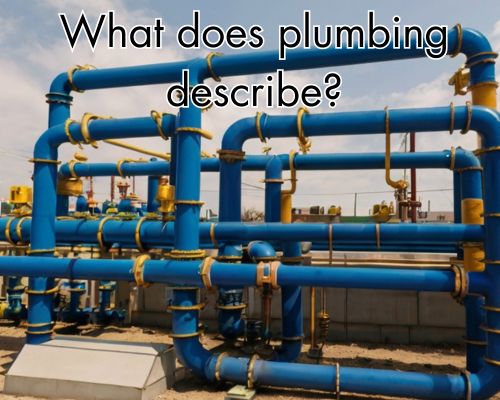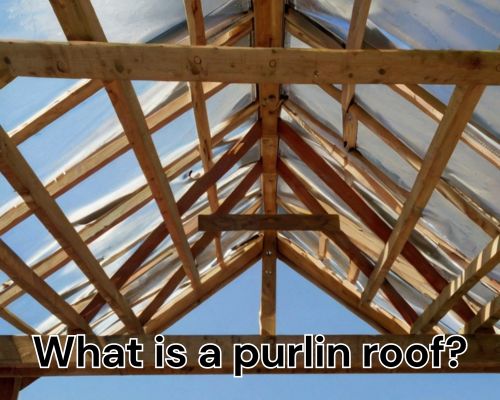When you hear the term “plumbing,” you might picture a leaky faucet, a clogged toilet, or a dripping pipe beneath the kitchen sink. But what does plumbing describe, really? In the broader context—especially within Australia—plumbing is not just a set of pipes and fittings. It’s an essential network that supports modern life, public health, and environmental sustainability.

With Dean Owens of Plumber Warragul, we’ll unpack the full scope of what plumbing encompasses, why it’s foundational to Australian infrastructure, and how it’s evolving in response to new technologies and water conservation challenges. Whether you’re a homeowner in Sydney, a renter in Melbourne, or running a business in Brisbane, understanding plumbing’s true definition is key to appreciating its daily impact.
Defining Plumbing: Beyond Just Pipes
So, what does plumbing describe in its most accurate and holistic form?
Plumbing refers to the system of pipes, fixtures, and other apparatus required for the distribution of potable water, removal of wastewater, and drainage of rainwater. But the term also encompasses a wide range of sub-systems and specialties including:
- Sanitary plumbing (e.g., toilets, sinks, baths)
- Drainage systems
- Gas fitting
- Roof plumbing (gutters, downpipes)
- Fire protection systems
- Stormwater systems
In Australia, the Plumbing Code of Australia (PCA) defines the technical standards for all plumbing and drainage work. The PCA is part of the National Construction Code (NCC), ensuring that all work performed by licensed plumbers meets strict regulatory and health standards.
Salient Entities in Australian Plumbing
To better understand what plumbing describes in the Australian context, consider the entities and systems involved:
- Water Corporation (WA), Sydney Water, and Melbourne Water: These authorities manage municipal water supply and waste systems.
- Energy Safe Victoria and Fair Trading NSW: These bodies regulate the licensing and safety of plumbing and gas fitting work.
- GreenPlumbers Australia: An initiative supporting eco-friendly plumbing solutions.
- Thermostatic Mixing Valves (TMVs) and Backflow Prevention Devices: Critical for water safety and hygiene in healthcare and commercial properties.
Each of these components plays a vital role in plumbing’s broad description, especially in a country like Australia, where water scarcity, urban development, and climate extremes make efficient water management crucial.
Plumbing in Australia: Regional Relevance
From the sun-scorched suburbs of Perth to the rain-drenched roofs of Hobart, plumbing systems are uniquely adapted to Australia’s regional climates. Let’s examine some local applications:
1. Water Scarcity Solutions in Perth and Adelaide
Cities like Perth rely heavily on desalination and rainwater harvesting, making plumbing systems a critical component in sustainable water management. In Adelaide, plumbers often work with greywater recycling systems to repurpose water for garden and outdoor use—vital in drier climates.
2. Stormwater Management in Brisbane
Plumbing in Brisbane frequently includes advanced stormwater drainage systems, due to frequent heavy rainfall. Ensuring compliance with local Queensland Urban Drainage Manual (QUDM) is a must for any plumbing contractor.
3. Cold Climate Considerations in Canberra and Hobart
In cooler regions like Hobart and Canberra, plumbing systems must be winterized to prevent pipe bursts. Installation of insulated hot water systems and pressure-reducing valves is a common requirement.
Plumbing as a Career in Australia
According to JobOutlook.gov.au, plumbing is a high-demand career across Australia, offering strong income potential and diverse specialization paths. A licensed plumber may work in:
- Residential plumbing (homes, apartment buildings)
- Commercial plumbing (shopping centres, offices)
- Industrial plumbing (factories, refineries)
- Green plumbing (eco-friendly and water-saving systems)
Becoming a plumber in Australia requires completing a Certificate III in Plumbing (CPC32420) and an apprenticeship, followed by licensure from a state authority like Consumer Affairs Victoria or NSW Fair Trading.
The Eco-Conscious Evolution of Plumbing
Modern plumbing isn’t just about utility—it’s also about sustainability. Australia is at the forefront of green plumbing technologies, including:
- Dual-flush toilets (an Australian invention)
- Water-efficient showerheads
- Smart irrigation systems
- Solar hot water systems
- Rainwater tanks and pump systems
These innovations reduce water consumption and align with BASIX (NSW) and Green Star building standards. In fact, plumbing plays a pivotal role in helping Australia meet its climate and energy targets.
Common Plumbing Issues Australians Face
Every Aussie homeowner will eventually deal with plumbing hiccups. Common issues include:
- Leaky taps and toilets
- Blocked drains and sewer lines
- Low water pressure
- No hot water
- Gurgling sinks
In many cases, these problems can be traced to poor installation, aging infrastructure, or tree root intrusion—a common culprit in cities like Sydney and Adelaide where mature trees are prevalent. For professional needs, go to Dean Owens of Plumber Warragul.
How Plumbing Safeguards Public Health
One of the most underappreciated aspects of plumbing is its role in disease prevention. The proper installation and maintenance of plumbing systems help:
- Prevent cross-contamination through backflow
- Control legionella in hot water systems
- Ensure sanitary waste disposal
- Maintain clean drinking water supply
During the COVID-19 pandemic, plumbing systems were critical in healthcare environments, from installing hands-free taps to modifying ventilation and drainage systems in quarantine zones.
So, What Does Plumbing Describe in Australia?
To sum it all up: plumbing describes a comprehensive, life-supporting system that goes far beyond what we typically imagine. In Australia, it means balancing environmental stewardship with technological innovation. It encompasses everything from backyard hose taps in suburban Darwin to high-rise fire systems in Sydney CBD.
And with ongoing climate change and urban growth, the plumbing industry is only becoming more important.
So the next time someone asks, “What does plumbing describe?”—you’ll know it’s not just about fixing a pipe. It’s about building the very backbone of safe, sustainable, and modern living in Australia.
Call to Action
If you’re in Australia and have questions about your plumbing system or want to upgrade to water-efficient fixtures, contact a licensed plumber in your local area. They can assess your home’s unique needs and ensure everything complies with Australian plumbing standards—keeping your water flowing and your household safe.
